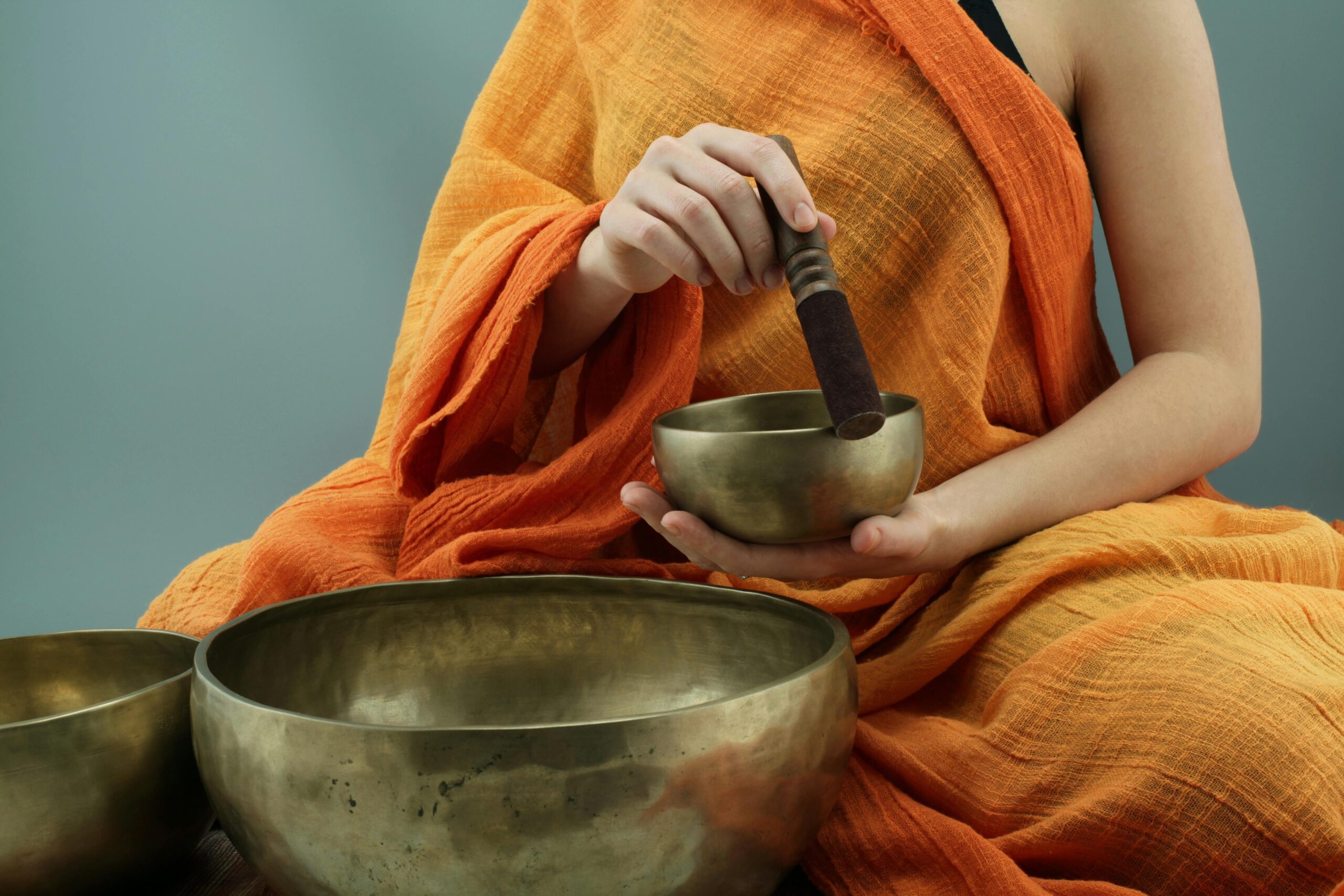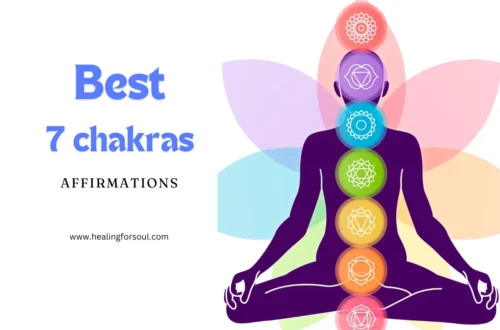Introduction To The Power Of mantra
Mantras have deep significance in various cultures and religions. They are sacred words or sounds that are believed to have the power to connect individuals with higher realms, leading to inner transformation and enlightenment.
Note: Mantras are often associated with spiritual practices.
What Are Mantras?
At their core, mantras are divine sounds that can be used as a tool for:
- Accessing spiritual energy
- Facilitating meditation
Let’s explore the profound effects of mantras on the mind and brain, uncovering the scientific principles behind their transformative influence. We’ll also look into the universal appeal of mantras across cultures while providing insights into integrating these powerful tools into everyday life for overall well-being and inner harmony.
Understanding Mantras: Revealed Words and Divine Sounds
What Are Mantras?
In the context of spiritual practice, mantras are sacred utterances, words, or sounds that hold symbolic and spiritual significance. These are often repeated during meditation to facilitate a connection with higher consciousness or divine energy.
Sacred Words Revealed to Ancient Sages
Mantras are believed to be revealed to ancient sages or seers during deep states of meditation or spiritual insight. These sages, in turn, passed down these sacred words through oral tradition or written scriptures, preserving their sanctity and power across generations.
Divine Sounds with Inherent Power
The sounds comprising mantras are considered to possess inherent vibrational power that transcends their linguistic or semantic meaning. It is believed that the vibrational quality of these sounds aligns with cosmic energies and can influence consciousness at a profound level.
Sound Ceremony, a website dedicated to exploring the transformative potential of sound, delves deeper into the subject by examining how specific mantras can evoke profound changes in one’s inner being.
By understanding the nature of mantras as revealed words and divine sounds, individuals can begin to appreciate their role in spiritual practices and their potential impact on the mind and inner being.
The Powerful Effects of Mantras on the Mind and Brain
1. Mantras as Spiritual Energy
Mantras are often seen as concentrated forms of spiritual energy that can be felt through repetition. When we chant or recite a mantra, it is believed that the vibrations created resonate with specific energy centers in our body, bringing about a sense of spiritual awakening and inner change.
2. Transforming the Mind with Mantras
The repetitive chanting of mantras has been found to have a deep impact on the mind. Research has shown that mantra meditation can create states of intense focus, relaxation, and heightened awareness. This can result in a feeling of peace and clarity, making it easier to release distracting thoughts and enter a meditative state.
3. How Mantras Affect the Brain
One interesting aspect of mantra practice is its potential to influence brainwave patterns. Brainwave entrainment is the process by which external stimuli synchronize the brain’s electrical activity with the rhythm of the stimulus. When we chant or listen to a mantra with a steady rhythm, it is believed that this repetitive sound can guide the brain into producing brainwave frequencies associated with relaxation, heightened concentration, and even transcendental experiences.
By exploring the world of mantras and their impact on the mind and brain, we gain valuable knowledge about how these ancient techniques continue to be relevant in our modern understanding of consciousness and well-being.
The Science Behind Mantra Repetition: A Doorway to Transcendence
Mantra repetition has a profound impact on the brain, engaging specific neurological mechanisms that facilitate states of heightened awareness and transcendence.
1. Rhythmic Repetition and Brain Activity
When individuals engage in the rhythmic recitation of mantras, it triggers neural pathways associated with focused attention and cognitive control. Studies have shown that this repetitive practice influences the prefrontal cortex, a region of the brain involved in executive functions such as decision-making, emotional regulation, and sustained attention.
Furthermore, the default mode network, responsible for mind-wandering and self-referential thoughts, exhibits decreased activity during mantra repetition, leading to a state of inner stillness and heightened present-moment awareness.
2. Effects on Cognitive Processes
Research has delved into the effects of mantra recitation on cognitive processes such as attention and self-awareness. It has been observed that the meditative repetition of mantras enhances attentional capacities, promoting sustained focus while reducing cognitive drift.
Moreover, individuals often report an increased sense of self-awareness and introspection during mantra practice, indicating a shift in cognitive processing towards internal experiences.
3. Neurological Correlates of Language Centers
The relationship between mantras and language centers in the brain is a fascinating area of exploration. While traditional mantras may have linguistic components, their effects extend beyond verbal meaning to engage non-verbal aspects of experience during meditation.
This phenomenon suggests that mantra repetition transcends linguistic processing within the brain, tapping into more primal forms of cognition linked to symbolic representation and emotional resonance.
The intertwining of rhythmic repetition, cognitive processes, and neurological mechanisms underscores the transformative potential of mantra practice as a doorway to transcendence. By understanding how mantras influence brain activity and cognitive functioning, practitioners can deepen their appreciation for the holistic impact of these sacred sounds on the human experience.
Enhancing Mindfulness through Mantra Meditation
Mantra meditation is not just about repeating sacred sounds or words; it is also a powerful tool for enhancing mindfulness and cultivating a deeper sense of awareness in the present moment. By focusing on the rhythm and vibration of the mantra, practitioners can reduce mind-wandering and foster a greater sense of present-moment awareness during their meditation practice.
Highlighting the Connection between Mantra Meditation and Mindfulness
Mindfulness is the practice of intentionally paying attention to the present moment with openness and curiosity, without judgment. It involves bringing one’s attention back to the present whenever the mind wanders. Mantra meditation can be seen as a form of mindfulness practice because it requires focused attention on the repetition of the mantra.
When practicing mantra meditation, individuals focus their attention on the sound, vibration, and meaning of the mantra. This focused attention serves as an anchor that helps prevent the mind from wandering into thoughts, worries, or distractions. By continuously redirecting their attention to the mantra, practitioners cultivate a state of mindfulness and develop the ability to stay present.
Research on Mantras and Mind-Wandering
Scientific studies have explored how mantra meditation can reduce mind-wandering and enhance mindfulness:
- One study conducted by researchers at Yale University found that repeating a mantra helped participants maintain focus on their breath during meditation, reducing mind-wandering significantly.
- Another study published in Frontiers in Human Neuroscience demonstrated that mantra repetition led to increased activation in brain regions associated with attentional control.
These findings suggest that incorporating mantras into meditation practices can help individuals train their minds to stay focused on the present moment, reducing distractions and increasing overall mindfulness.
Fostering Present-Moment Awareness through Mantra Meditation
Mantra meditation not only reduces mind-wandering but also fosters a greater sense of present-moment awareness. By directing their attention to the rhythm and vibration of the mantra, practitioners become more attuned to the sensations, thoughts, and emotions arising in the present moment.
The repetition of mantras can create a state of deep concentration and absorption, often referred to as “flow.” In this state, individuals become fully engaged with their mantra and experience a heightened sense of awareness. This focused awareness allows practitioners to observe their thoughts and emotions without getting caught up in them, leading to a deeper understanding of their inner experiences.
Incorporating mantra meditation into daily life can have profound effects on one’s overall well-being and mental clarity. By enhancing mindfulness and present-moment awareness, individuals can navigate their daily challenges with greater ease and find a sense of inner peace and harmony.
“When you realize how perfect everything is, you will tilt your head back and laugh at the sky.” – Buddha
Exploring the Universal Appeal of Mantras across Cultures
Mantras have a universal nature that goes beyond cultures, making them connect with people from different spiritual backgrounds. These sacred sounds have been changed and used in various religious traditions, showing how they can fit into different cultures and are always relevant.
1. Transcendent Quality of Mantras
The deep appeal of mantras is their ability to bring about spiritual experiences that are very personal but also universally understood. Regardless of one’s cultural or religious background, mantras have the power to induce states of meditation, reflection, and transcendence that resonate with all individuals.
2. Adaptation within Religious Traditions
Mantras have seamlessly integrated into numerous religious practices, including Hinduism, Buddhism, Jainism, Christianity, and Islam. Here are some notable examples:
- In Hinduism, mantras play a vital role in Vedic rituals and acts of devotion.
- Tibetan Buddhism incorporates mantras in practices such as Om Mani Padme Hum.
- Christianity embraces the concept through the Jesus Prayer, involving the repetition of a mantra-like phrase during meditation.
3. Cultural Relevance
In every culture, mantras serve as a means to connect with higher awareness and inner divinity. Whether it’s the rhythmic chanting of “Aum” in Hinduism or the recitation of “Ave Maria” in Catholicism, the fact that mantras appeal to everyone demonstrates their ability to foster spiritual connections even among individuals from diverse cultural backgrounds.
By examining how mantras can adapt and resonate with different cultures and religious beliefs, we gain insight into why they remain significant tools for personal transformation and establishing a connection with the divine or the sacred.
The Personal Journey of Mantra Practice: Seeking Guidance and Authenticity
When you start your personal journey of mantra practice, it’s important to approach it with discernment and seek guidance from experienced teachers. Mantra practice is deeply rooted in ancient traditions and has been passed down through generations. The guidance of a knowledgeable teacher can provide valuable insights and ensure an authentic practice. Here are some tips for finding a genuine mantra practice tradition or lineage:
1. Research and Explore
Take the time to research different traditions and lineages that resonate with you. Look for authentic sources of information such as reputable books, articles, and websites that delve into the history and philosophy of mantra practice.
2. Seek Recommendations
Reach out to individuals who have experience with mantra practice or are part of spiritual communities. Seek their recommendations for teachers or organizations known for their authenticity and integrity.
3. Attend Workshops and Retreats
Participating in workshops or retreats dedicated to mantra practice can be an excellent way to connect with experienced teachers. These immersive experiences offer the opportunity to learn directly from experts in a supportive environment.
4. Visit Spiritual Centers or Ashrams
Consider visiting spiritual centers or ashrams where mantra practice is an integral part of the daily routine. These places often have resident teachers who can guide you in your journey.
5. Teacher-Student Relationship
Establishing a teacher-student relationship is vital in mantra practice. A teacher can provide personalized guidance, correct any misconceptions, offer support, and help navigate the challenges that may arise during the practice.
6. Initiation into Mantra Practice
In certain traditions, initiation into mantra practice is considered essential. This initiation ceremony marks the formal beginning of your journey and establishes a connection between you, the teacher, and the lineage.
By seeking guidance from experienced teachers and following an authentic tradition or lineage, you can ensure that your mantra practice is grounded in knowledge, wisdom, and cultural heritage. This not only deepens your understanding but also enhances the spiritual growth and transformation that can be achieved through mantra practice.
Remember, the personal journey of mantra practice is unique for each individual. It is important to approach it with an open mind, patience, and dedication. As you delve deeper into the world of mantras, embrace the process and trust that the power of sound will guide you on a path of self-discovery and inner harmony.
Integrating Mantras into Everyday Life for Well-being and Inner Harmony
Mantras can extend beyond traditional meditation practices and be integrated into daily life, offering a continuous source of support for inner harmony and well-being. By infusing our routines with the power of sacred sounds, we can cultivate a deeper sense of connection and balance in the midst of our bustling lives.
Suggest practical ways to incorporate mantras into daily routines:
Morning Rituals
Begin the day with a positive mantra to set the tone for the hours ahead. For instance, reciting “I am filled with peace and purpose” while preparing for the day can establish a tranquil mindset.
Mindful Walking
While taking a walk, silently repeat a grounding mantra such as “With each step, I am present and at peace” to anchor yourself in the present moment.
Before Sleep
End the day by chanting a soothing mantra like “I release all tension, embracing tranquility” to ease into a restful state.
Explore the use of affirmations as a modern-day adaptation of traditional mantras:
In contemporary mindfulness practices, affirmations serve as modern-day counterparts to ancient mantras. These positive statements are intentionally crafted to foster self-empowerment and resilience. For example, phrases like “I am capable of overcoming challenges” or “I radiate love and compassion” can function as personalized affirmations that align with individual aspirations. This is particularly relevant when trying to build your teen son’s self-esteem.
By seamlessly integrating mantras and affirmations into our daily experiences, we infuse our lives with an undercurrent of spiritual resonance, enhancing our capacity for emotional equilibrium and self-awareness.
Conclusion
Mantras have the power to profoundly impact our lives and bring about positive transformation. They are more than just words – they carry an energy that can enhance our well-being, promote mindfulness, and facilitate spiritual growth.
Whether we choose to chant traditional mantras or use modern affirmations, the repetitive recitation of these sounds can create a deep resonance within us. It is through this repetition that we tap into the transformative power of mantras.
Benefits of Mantra Practice
- Focus and Relaxation: The rhythmic chanting or silent repetition of mantras has been shown to induce states of focus and relaxation. This helps calm the mind and soothe the nervous system, reducing stress, anxiety, and mind-wandering.
- Present-Moment Awareness: Mantra practice fosters a greater sense of present-moment awareness. By bringing our attention to the here and now, we can fully experience life as it unfolds.
- Enhanced Cognitive Processes: Scientific research has revealed that mantra recitation influences brain activity, particularly in areas associated with attention and self-awareness. This suggests that mantras have the potential to enhance these cognitive processes.
- Connection to Spirituality: Mantras have long been regarded as sacred words that hold divine essence. Engaging in mantra practice can deepen our connection to spirituality and provide a sense of inner guidance.
How to Approach Mantra Practice
When it comes to mantra practice, it is important to approach it with an open mind and seek guidance from experienced teachers who can provide authentic traditions or lineages. They can help us understand the meaning behind different mantras and how to use them effectively.
Incorporating mantras into our daily routines allows us to integrate their benefits into our everyday lives. Whether we choose to chant aloud or silently repeat a chosen affirmation, regular practice is key in experiencing firsthand the transformative power of mantras.
Embracing Mantras in a Busy World
In today’s fast-paced world filled with distractions, exploring the world of mantras offers us a path to inner harmony and self-discovery. By embracing the power of sound through regular mantra practice, we can find moments of stillness amidst the chaos and connect with our true selves.
Remember, the power of mantra lies in its ability to profoundly impact our lives and bring about positive transformation. So why not embark on this journey of personal growth and see where it takes you?






